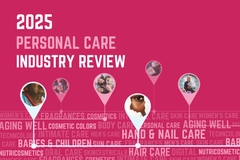EU REACH reform to increase costs and compliance pressure for cosmetics industry

The European Commission has proposed a major update to the REACH Regulation, introducing stricter rules directly impacting cosmetics companies retailing in the EU. The changes aim to improve chemical safety but could significantly increase costs and compliance work, especially for smaller businesses.
One of the most significant changes is that REACH substance registrations will only be valid for ten years. Currently, once a substance is registered, the approval lasts indefinitely. Under the new rules, companies will be required to re-register substances every decade, adding extra costs and paperwork to their business operations.
Additionally, the European Chemicals Agency (ECHA) will have more power to cancel registration numbers if the required information from their submitted dossiers is missing or not fully updated. Companies will then lose their registration status, their incurred expenses will not be reimbursed, and they must start the process over.
The reform also introduces stricter data requirements. Companies will be required to prove that their ingredients are not classified as persistent, mobile, and toxic substances or endocrine disruptors, processes that are also costly.
In addition, polymers — which are widely used in cosmetics for thickening, emulsifying, and film-forming — will no longer be automatically exempt. Unless they meet the strict classification of “polymers of low concern,” they will now require registration as individual substances.
At the same time, ECHA is increasing testing demands under the current system. The agency recently proposed 14 new substance testing requirements and opened them up for public comment until May 2.
These requirements include tests for reproductive toxicity, genetic toxicity, long-term fish toxicity, and bioaccumulation. The agency aims to update safety data for substances already registered under REACH. While not all 14 substances are directly used in cosmetics, the move signals a shift toward tighter safety controls and more regular testing for all chemical ingredients.
Digitalizing REACH
The REACH reform also pushes for digitalization. A new Digital Product Passport (DPP) will be introduced to help track substances of concern across supply chains. The DPP is already required under the EU’s battery rules and expected to apply to other industries soon, including cosmetics.
.jpg) Cosmetics ingredient suppliers face stricter registration rules under the proposed REACH reform.Alongside this, companies will need to submit digital Safety Data Sheets (SDS) that match the DPP format. While finished cosmetic products are exempt from some REACH communication rules, raw materials will still need updated digital SDSs, creating extra work and expense for ingredient suppliers.
Cosmetics ingredient suppliers face stricter registration rules under the proposed REACH reform.Alongside this, companies will need to submit digital Safety Data Sheets (SDS) that match the DPP format. While finished cosmetic products are exempt from some REACH communication rules, raw materials will still need updated digital SDSs, creating extra work and expense for ingredient suppliers.
Companies should also expect stricter enforcement. Within four years of the reform taking effect, the REACH database will be connected to the EU’s customs system. Customs officers will be able to automatically check registration and authorization numbers and request SDSs in the local language.
This change will make border checks more thorough and require companies to be fully prepared with complete documentation.
E-commerce rules
The reform also closes a gap in REACH rules for e-commerce. Currently, products sold directly from outside the EU to EU consumers — such as via online stores — do not have a clear responsible party. The new rules will require these companies to appoint an economic operator in the EU to ensure the products meet REACH requirements.
Other parts of the proposal include new nanomaterials rules and further animal testing restrictions. These details are still in the developmental stage.
The public consultation on the proposed reform is open until April 25, 2025, and the final law is expected later this year.













